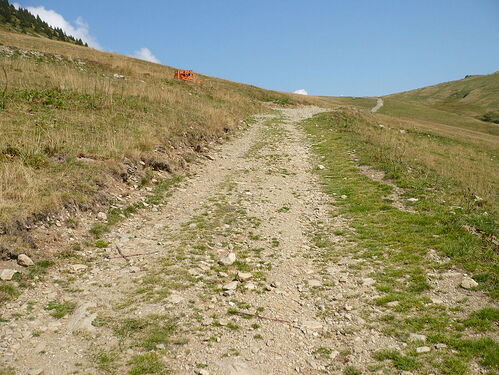While considering the discussion of the images in the smoothness Gallery, I realised there may be 2 conflicting ways of categorising the smoothness key values.
Before I added the “descriptions” column to the Values table in https://wiki.openstreetmap.org/wiki/Key:smoothness in early 2021 (discussion mostly on the talk page here), there were only some often inconsistent photos to illustrate the various values. My reasoning behind the descriptions is as follows: the “anchor” of categorisation should be the difference between the bad and very_bad categories: bad is usable by “robust wheels”, while very_bad is usable by “high clearance”. My interpretation of this is that very_bad is characterised by the presence of obstacles for which high clearance is needed, while bad doesn’t have such obstacles.
For highways that are better than very_bad, 4 categories are then available. From my own experience as a car driver, there are 3 kinds of road qualities: roads that are “no problem”, roads that are “starting to be a problem” and roads that are “a real problem”. They are characterised by the speed you can use on these roads: “full speed”, “careful speed” (still making good speed, but with increased attention and ready to press the brake pedal), and “snail’s pace” (slow down considerably because there’s real risk for damage to the suspension system, tyres, etc. but not the underside of the car). For the last one, bad can be tagged, intermediate for the intermediate one, while the “no problem” either good or excellent can be tagged (there is no practical difference between them for cars). good and excellent can then be used to make a distinction for small wheeled vehicles like skateboards and roller skates.
The makers of the gallery at Berlin/Verkehrswende/smoothness - OpenStreetMap Wiki (translation here) appear to have used a different categorisation where very_bad isn’t as bad as what I had in mind, while I would hardly slow down for the surfaces shown in the bad column. The table has been developed for urban use, where high clearance is hardly ever needed, so maybe that’s why the photos in the very_bad column don’t show obstacles for which high clearance is needed (except for the very_bad asphalt one, maybe). @Supaplex030 you uploaded most of those photos, can you enlighten us on the reasoning behind the categorisation? Or anyone else who took part in its development?
The smoothness Gallery is using many photos from the Berlin Verkehrswende table, which were then used for the smoothness quest in StreetComplete.
I would like to start a discussion on how to resolve the divergence between the two categorisation approaches.

